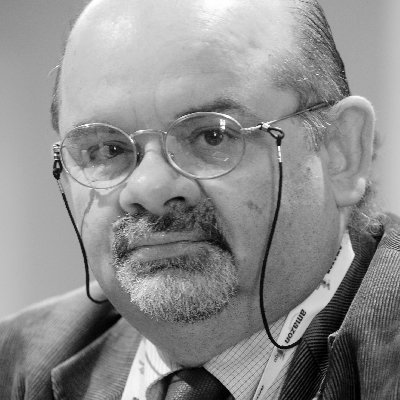
Paul Connett is considered the “father” of the Zero Waste Strategy, which regrettably often has become a slogan with no real meaning. We asked him to tell us what the state of the art of such strategy is, what its possible developments are and what the next steps may be. First – he says – we need to target the community, raising people’s awareness on the environmental and economic advantages envisaged by this strategy.
The Zero Waste Strategy is widely accepted by environmentalists but struggles to catch on. Why?
“The key problem is the loss, or rather the absence, of political leadership. The Italian politicians that I meet, for example, always tell me that in Italy there is a cultural problem with the Zero Waste Strategy, because Italians are not positive about it. Well, this is false: when two similar communities, three kilometers apart, have a markedly different separate waste collection rate, one of 17% and the other of 80%, the cultural aspect has certainly nothing to do with it, because culture does not change withing such small distance. What can change is the political guidance.”
So, what needs to be done?
“We need to start from the communities, working with some ‘ingredients.’ First, we obviously need to implement separate waste collection, then we need to organize our community. But we also need creativity and the contribution of creative people able to find solutions. Not only that: we need to involve children who are creative par excellence and guarantee the future of the Zero Waste supply chain. Lastly, we need excellent communication. These are the ‘little pieces’ of the Zero Waste Strategy that can become collective knowledge and be shared through the Internet as well amongst various communities to solve problems.”
So, is a technological as well as sociological approach necessary?
“Above all a sociological one. Nowadays the waste issue is more sociological than technological: solutions lie in a better organization, a better education and only at the end in a better industrial planning. Then the waste issue must be seen in a wider context. This is just one of the pieces of what we need to tackle a whole series of problems linked to sustainability. There is a risk of catastrophic events, we need contributions by all disciplines – both science and humanities – to solve problems. We need agriculture, architecture, energy, community, industries. Oviously they must all be sustainable.”
In other words, maximum interdisciplinarity is needed, isn’t it?
“Yes. More importantly, we should not confine our reasoning and delegate research of solutions to sustainability experts. We need the contribution of all disciplines, even if they are remotely linked to sustainability: not only economy, physics and chemistry but also painting, music and poetry. And there is a need for engligtened minds working in their fields on themes linked to sustainability. This is the biggest challenge we have to face since WWII.”
Is that all?
“Absolutely not. Besides that, there is also a very important psychological aspect: if we want to succeed with the Zero Waste Strategy it is necessary to involve from the start a large number of people. Indeed, as human beings, we need to see successful examples working as a psychological driver so as to activate new processes in other communities and promote grassroots development of the Zero Waste Movement. When communities reach a good result – even with regard to separate waste collection – become themselves, with their pride, psychological drivers for other communities which may be near or far. Moreover, the success of the waste strategy can be useful to develop other pieces of local sustainability, within renewables and organic farming and so on. For example, we can use compost produced by a community in the fight against pesticides, GMOs and climate change. All this within the same community and sharing it with others. Leading by example is key in spreading the Zero Waste Strategy.”
In order to eliminate waste, we need to reuse materials from separate waste collection, but often it is local committees that oppose new plants. How can we solve this contradiction?
“I think there is a need for grassroots initiatives. We need to know what the needs of a specific community are. Over the years, I have personally done almost 2,500 presentations of the Zero Waste Strategy to communities. Both to understand what communities want, and what they can do. I think that in the future there will be lots of friction. We must tell communities that on the one hand there are multinationals, whose target is to exploit the resources of the planet until they can, while on the other we have those who want to protect themselves, by defending such resources. Against this framework, we have to teach communities that they should not give others their resources, starting from waste which is a value that can create work and small businesses within the community itself. The same should be done with food. Italy is trying with the Slow Food movement, which is experimenting with short supply chains that are a perfect match for the Zero Waste philosophy and the emission reduction. Energy should also be included in short supply chains which must be decentralized and produced near the area where it is used. If all this is combined with this approach, possible resistance by local communities towards pieces of the Zero Waste Strategy can be defeated.”

Could you please give us a few examples, perhaps in different nations?
“Yes, but I want to underline the fact that it is not nations who recycle waste and set up Zero Waste Strategy: it is the community that we must observe, otherwise we start with the wrong approach. A solution found in a community may not be good in another, for instance for population aspects. In America, for example, we have to look at what San Francisco does and not at California or the United States. In Italy, we need to look at Treviso or Capannori, in order to find possible solutions. Let’s take the organic waste fraction as an example, in which three communties around the world must be carefully studied. I am talking about San Francisco, Milan and New York which are tackling this problem with a different approach, since these cities are very different from one another.”
When will the Zero Waste target be reached?
“Each community has its own timing. We can, though, look at what happened in the past. The Zero Waste Strategy started in Australia in 1996 when the government passed a law on waste envisaging their drastic reduction. Objective: zero waste by 2010. This was an important signal that reached California where a similar law was passed through which each community had to manage 50% of waste in ways other than disposing of it in landfills or incinerate it. After that, California reached 300 communities that achieved such objective, saving money. So, many people saw these results were possible and started to ask: ‘Why not increase the objective to 60, 70 or 80%? Or aim at the Australian one?’ Other communities such as that in San Francisco went from the ‘No Waste’ objective to the ‘Zero Waste’ one. It may seem a small change, but it is not. The second slogan communicates citizens the distance to the objective, thus making it more effective.”
Good. But where the Zero Waste Strategy is applied, how far are we from target?
“Nowadays, there are two places in the world where this strategy is in full swing. The first is San Francisco where we have over 80% of separate waste collection, there is no inceneration and we are moving towards 100% – that is Zero Waste – by 2020. The other – surprise, surprise – is Italy where there are the worst examples of waste management in the world, but also the best. Today, in Italy, there are over 1,000 communities where separate waste collection exceeds 60%. 300 are over 80% and some of these over 90%. And everything is achieved in very short periods of time.”
Italy at the helm of sustainability. Are you sure?
“Yes. Today communities need clean water, good food, high quality agriculture and life. Italy has all this and in abundance. From this perspectives, you are millionaires compared to the average US citizens; I believe in this, so much so that when they ask me where I would like to live I reply Italy. And all this without even considering the landscape, art and cultural heritage. Not everywhere, to tell you the truth, but this is applies to at least one thousand Italian communities. And this is no small thing.”
Good, but one the problems in Italy is work. Can the Zero Waste Strategy contribute to job creation?
“Yes, the Zero Waste Strategy can certainly offer many opportunities, many more than incineration that compared to that is a ‘black box.’ Let’s take, for instance, the sector of reuse ond repairing. Today, in this sector, we already have work linked to maintenance, reuse and repairing and that can be increased. But we do not have people working on training people whom we could teach how to repair and reuse objects. Here is fresh work. Besides that, new jobs can be created reusing building materials, adapting it to new constructions. These are activities that in traditional supply chains do not exist, but which can produce new jobs. It is a network of supply chains with a flow which does not produce temporary work and thus job insecurity. A person with no training, for example, can start working in waste separation and then move onto repairing, thus improving their working position.”
Today there is a lot more scientific research on recycling and more generally on waste management compared to the past. Do you think we are getting there?
“I think so. Today, many researchers, scientists and students deal with this, stimulated by the ten points of the Zero Waste Strategy. We need research, particularly in composting, reusing and repairing and in increasing waste separation in big cities. Not only that: we need to develop new systems to separate the residual fraction in a better way, achieving more recyclable material, and to eliminate as many toxic substances as possible, thus obtaining more organic matter, useful for compost.”
So, can research be carried out in systems only?
“There is a very important sector where a lot of research is needed: that of design. Products must be designed to be reused and recycled and the best minds available must be included here as well because it is a strategic sector to reach the Zero Waste objective. Here, Italy can play a crucial role because it has some of the best architects and designers in the world. I believe that if Italians cannot improve the design of an objet, no-one else can.”



